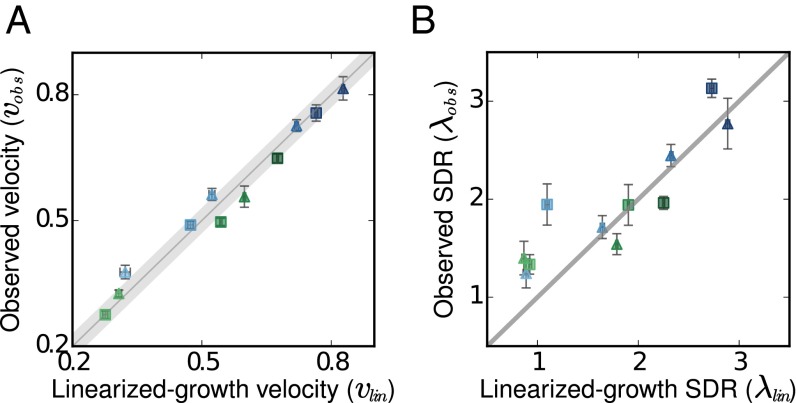Fig. 3.
For pulled waves, the growth rate at low density is sufficient to determine the emergent wave properties quantitatively. Over a wide range of environmental conditions, the observed expansion velocities and the spatial decay rates (SDR) of the population density at the front closely match the predictions based on the measured low-density growth rate. (A) Predicted and observed velocities in two different media are shown (glucose in blue, galactose in green). The migration rate (triangles: m = 0.5, squares: m = 0.4) and the death rate (darker colors are smaller death rates) were varied. Independently measured growth rates, only at low densities, in the two different media were sufficient to predict the velocities accurately. (B) A similar comparison for the spatial decay rates (λ, well−1) also shows close agreement for steep predicted fronts (large λ). However, shallow predicted fronts deviated slightly from predictions, which may be a consequence of the long relaxation time to equilibrium for such fronts. x-axis error bars: SEM of the measured low-density growth rates, propagated to the errors in predicted velocity (A) and spatial decay rate (B). y-axis error bars: (A) SD of velocity measured for five different thresholds, and (B) SD in spatial decay rate measured over three different regions of the front.

